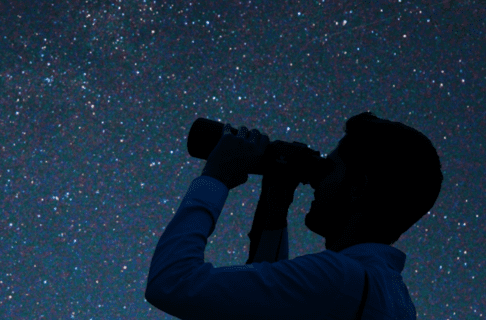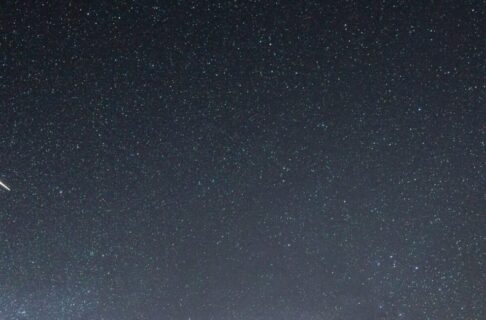Posted on: Monday August 8, 2016
Updated 8 August 2016 9:29 CDT
Every year, the annual Perseid meteor shower occurs around August 11 and 12. This year, though, is predicted to be a much more active shower than in previous years. What can we expect, why is it happening, and how can you see it yourself?
As the earth orbits the sun, it crashes into bits of rock, ice, and dust which are left over from the formation of the solar system. These tiny fragments hit the earth’s atmosphere at cosmic velocities, quickly heating up due to friction and vaporizing tens of kilometers above the ground in a flash of light. These flashes are called meteors, and are also known as shooting stars or falling stars. On a typical night, if you can avoid any sources of light from cities and the moon, you can see a handful of these every hour. The trick is, to be watching the sky for that entire hour, because meteors are literally visible for a second or two and then gone. Don’t blink!
In addition to these sporadic meteors, several times a year the earth travels through a denser trail of dust left behind by a comet. Comets are icy bodies that orbit the sun, growing a long tail when they get close enough to the sun. These comets leave a trail of ice and dust in their wake, and when the earth passes through the trail we get many more meteors than usual. This is called a meteor shower, and they occur about the same time every year. One of the best known showers is the Perseids, which usually peak around August 11th and 12th.
This particular year, the earth is predicted to be going through an especially dense part of the meteor trail left behind by Comet Swift-Tuttle. This means we can expect more meteors than normal this year for the Perseids.
So what does this mean?
First, don’t be mislead by some of the images floating around social media – the stars won’t fall like rain. If you go out at the right time, you will see a lot of meteors, but a lot depends on your local conditions. Here’s how to maximize your chances.
- Meteor showers always are best after midnight. Due to the geometry involved, when your part of the earth is experiencing “evening”, the meteors are hitting a glancing blow. Not many can catch up to the Earth in its orbit, so you will see fewer meteors than the predicted amounts. The silver lining here is that the few meteors you will see are usually the bright fast ones that leave a trail across the sky. Before-midnight viewing is definitely about quality, not quantity.
- Avoid city lights. Meteors are faint compared to streetlights, advertising signs, and other artificial lights. From inside the city, you may see a handful of meteors, but you’ll miss most of them. The best views are to be had from under dark country skies. Head out of the city, and set up with your back towards the brightest lights you can see.
- Avoid telescopes. Meteors can happen anywhere around the sky and only last for a few seconds – you won’t have time to point a telescope at them. Telescopes have very small fields of view, so you are only looking at a fraction of the sky at once. This is one type of astronomy that is perfect for the low-tech approach. The most useful piece of equipment is a reclining lawn chair or blanket to lay back on.
- Avoid the moon. This is usually the big variable between one year’s shower and the next. If the moon is full, you have a big source of light pollution that you can’t just drive away from. Luckily, this year, the moon is not full, but it’s close. For Manitobans, the moon will set around 1 a.m. on the night of the 11th/morning of the 12th, giving us a solid three hours of dark skies until the twilight begins.
Suggested viewing plan: Head out of town the evening of Thursday, August 11. Find a place where you can observe that avoids as many lights as possible. Ensure that you’re not too near a road or other hazard. (Make sure you choose a place that is not private property unless you have permission from the owner!) Set up your lawn chair with your back facing towards the brightest lights you can see, and just look up. Keep all lights off, so you eyes can adapt to the dark. If you look at a light (like your mobile device) for even a split-second, you will kill your night vision for several minutes. Even if the device is set to red, it is much too bright. Watch the sky for as long as you can, and just count the meteors!
If you want to try capturing a meteor image on your camera or turn your observations into science, visit the International Meteor Organization’s web page – they have further details on how to make meteor counts and take images of meteors.





